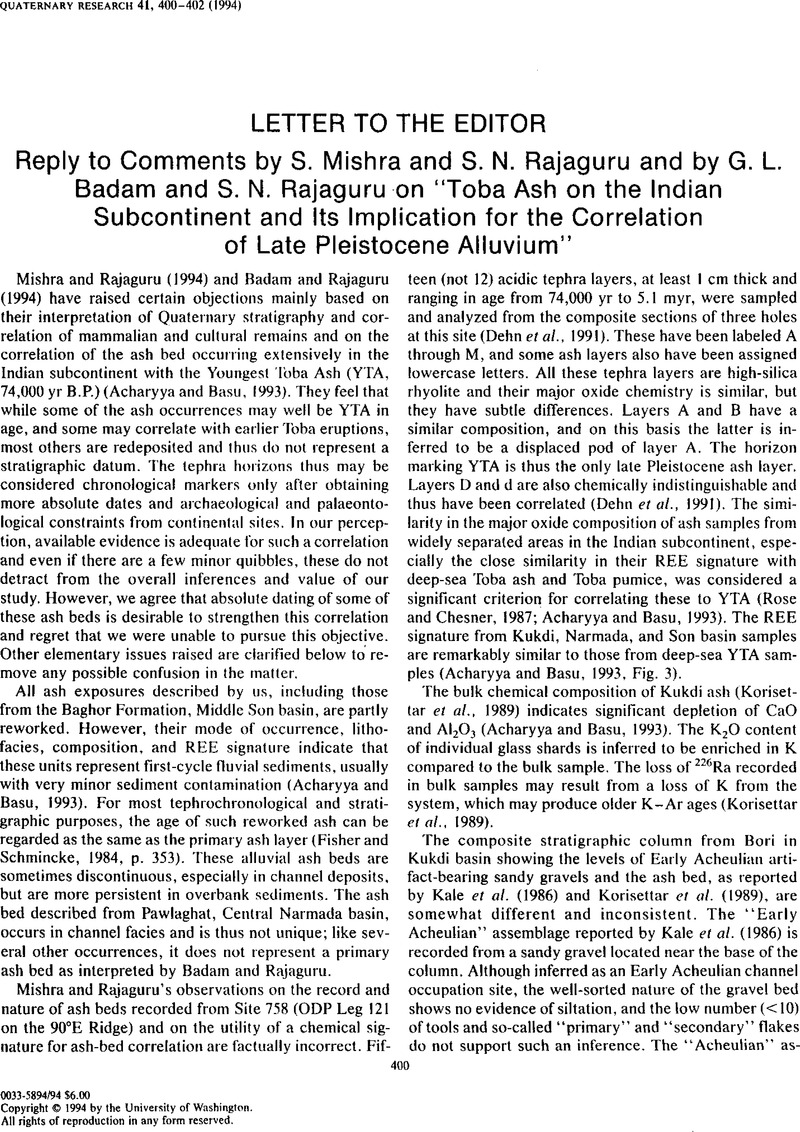Crossref Citations
This article has been cited by the following publications. This list is generated based on data provided by Crossref.
Sankhyan, A.R.
1997.
Fossil clavicle of a Middle Pleistocene hominid from the Central Narmada Valley, India.
Journal of Human Evolution,
Vol. 32,
Issue. 1,
p.
3.
Westgate, John A.
Shane, Philip A.R.
Pearce, Nicholas J.G.
Perkins, William T.
Korisettar, Ravi
Chesner, Craig A.
Williams, Martin A.J.
and
Acharyya, Subhrangsu K.
1998.
All Toba Tephra Occurrences across Peninsular India Belong to the 75,000 yr B.P. Eruption.
Quaternary Research,
Vol. 50,
Issue. 1,
p.
107.
Petraglia, Michael D.
and
Allchin, Bridget
2007.
The Evolution and History of Human Populations in South Asia.
p.
1.
Jones, Sacha C.
2007.
The Evolution and History of Human Populations in South Asia.
p.
173.



